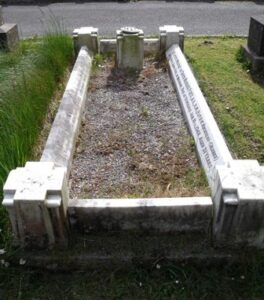Situated on the North side of the main A40 between Haverfordwest and Narberth, are the three Rural Parishes of Wiston, Clarbeston Road and Walton East. The War Memorial in honour of the men of these three Parishes sits inside the Village Hall at Clarbeston Road, and takes the form of an engraved brass plaque. The same men are commemorated on the nearby Wiston War Memorial. Many thanks to Paul Childs for the photograph of the Memorial.
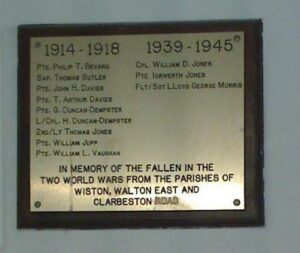
The Great War, 1914-1918
Phillip Thomas Bevans, Rifleman, C/1285, Kings Royal Rifle Corps. Phillip was the son of John and Mary Bevans, of East House, Maryborough, Wiston. He enlisted at Pembroke into the Army, and joined the 16th Battalion, King’s Royal Rifle Corps, which was attached to 100 Brigade, 33rd Division. The Division moved to France during November 1915, and saw its first major action during the Battles of the Somme, from July, 1916 onwards. Phillip was killed on the Somme on 21 July 1916. He was just 21 years old. He has no known grave, and so is commemorated on the Thiepval Memorial, France.
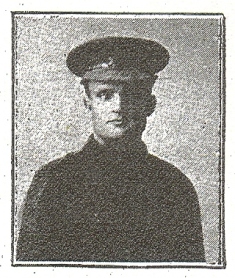
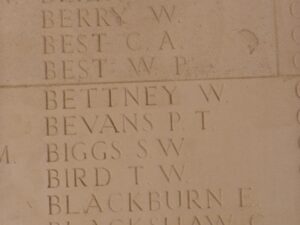
Thomas Butler, Private, 94071, Notts & Derby Sherwood Foresters. Thomas was the son of Henry and Mary Butler, of West Dairy Lane, Wiston, and the husband of Margaret Butler, of Wogan’s Villa, Clarbeston Road. He had originally enlisted at Pembroke into the Royal Engineers, but had later transferred into the 12th Battalion, Sherwood Foresters, attached to the 24th Division as Pioneers. The Division had moved to France during August 1915 and marched to positions near Loos, where they took up reserve positions for the main Battle of Loos. They were sent into battle on 26 September 1915 at Loos and suffered terrible casualties due to not being properly trained for battle, and were pulled from the line until the following year. In 1916 they took part in the Battle of the Somme, and fought at Delville Wood and Guillemont, before moving north of Arras in early 1917. In April and May 1917 they fought at the Battle of Vimy, alongside the Canadian Corps, and in June they moved to positions south of Ypres, where they fought during the Battle of Messines. After the successful capture of Messines Ridge, the Division moved further north, and fought at the Battles of Pilckem and Langemarck during Third Ypres. The Division then moved to positions north of St. Quentin over the winter of 1917/18, and were here when the Germans launched their Offensive on 21 March 1918. Thomas was killed in the terrible fighting that followed that day, on 28 March 1918. He was 30 years old, and is commemorated on the Pozières Memorial, France.
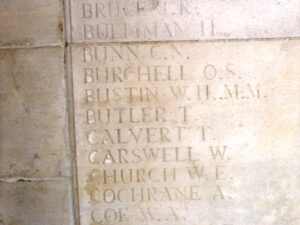
John Henry Davies, Driver, T/ 329249, Royal Army Service Corps. John was born in 1887, the son of Thomas and Anne Davies, of the Old Post Office, Clarbeston Road. He enlisted at Haverfordwest on 17 February 1916 into the Army Service Corps as a Driver. On 1 May 1917 John was posted to the H. T. Company, Army Service Corps, and was stationed at Hornsea, Essex. John became ill while stationed here, and died of pneumonia at Hornsea on 30 November 1918. He is buried at Wiston (St. Mary) Churchyard.
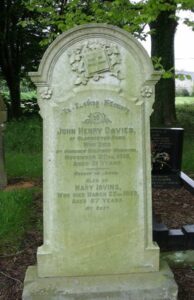
Thomas Arthur Davies, Private, 81265, Kings Liverpool Regiment. Thomas was the son of W. R. and M. Davies, of Hazebrook, Clarbeston Road, and the husband of Sarah Jane Davies, of Croft, Llysyfran, Clarbeston Road. He had enlisted at Picton Hall into the Cheshire Regiment, but was probably wounded in France, and transferred to the 23rd Works Battalion, King’s Liverpool Regiment. Thomas died of sickness at Prees Heath Military Hospital on 6 May 1917, aged 33, and is buried at Wiston Calvanistic Methodist Burial Ground.
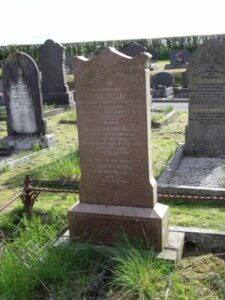
Harry Skeel Duncan Dempster, Lance Corporal, R/6328, Kings Royal Rifle Corps. Harry wwas born at Bromyard, Herefordshire in 1888, the son of Robert Dempster and Margaret Dempster (nee Evans). By 1891 the family had moved to Canal Bank Cottage, Brecon, where his father had gained a position as Huntsman. He was educated at Christs College and at Brecon Grammar School. Harry worked as a clerk prior to enlisting at Haverfordwest into the King’s Royal Rifle Corps on 2 November 1914 and was posted to their depot at Winchester, before joining the newly formed 7th Battalion, King’s Royal Rifle Corps, which was at Marlborough Lines, Aldershot, attached to 41 Brigade, 14th (Light) Division. In November 1914 the battalion moved to Grayshott, near Hindhead in billets, then in February 1915 to Bordon, before moving to Aldershot in March to complete its training. On 19 May 1915 the battalion landed at Boulogne and the entire division moved to the Ypres Salient, for trench initiation alongside the 5th Division. The Division was to see its first major action during the Action of Hooge in July 1915, where the Division became the first to be attacked by the German use of flamethrowers. The Division remained in the Hooge Sector, in terrible conditions after this horrific attack, suffered heavy casualties on a regular basis. Harry was shot in the head and badly wounded at the end of July 1915 and was evacuated to No 24 General Hospital at Étaples, where he died of his wounds on 2 August 1915. The 27-year-old was buried in Étaples Military Cemetery, France. His brother Robert George Duncan Dempster was killed in France in 1918. The brothers are commemorated on the war memorials at Wiston and Clarbeston Road, in Pembrokeshire, where their father was born and moved back to after retirement.
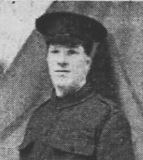
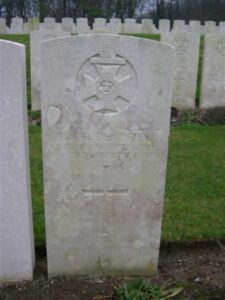
Robert George Duncan Dempster, Private, 227181, Monmouthshire Regiment. Robert was born in 1882, the son of Robert Dempster and Margaret Dempster (nee Evans), of Wiston, Pembrokeshire. He resided with his Aunt, Mrs Evans, at Dolgwili Farm, Abergwili for several years prior to the war, working as a Clerk and was secretary of the Abergwili Show. Robert enlisted at Newport into the 2/1st Battalion, Monmouth Regiment soon after its formation at Newport on 20 February 1915 as part of the Welsh Border Brigade, Welsh Division, which was later numbered as 205 Brigade, 68th (2nd Welsh) Division, and remained on Home Service until the Division was disbanded on 31 March 1918. The men of the 2/1st Monmouth’s were used as reinforcements for the 1/1st Battalion, Monmouthshire Regiment, which was by then the Pioneer Battalion to the 46th (North Midland) Division. Robert was drafted to France in the summer of 1916 to join the 1/1st Battalion, Monmouthshire Regiment. The 46th Division had just returned to France following a very brief spell in Egypt, moving to positions on the Somme. Here the Division took part in a diversionary Attack on the Gommecourt Salient on 1 July 1916, which was intended to draw attention away from the main attack on the Somme, but suffered terrible casualties. The division then rested and refitted for several months at Arras, returning to the Somme at the end of 1916 to take part in Operations on the Ancre. During March 1917 the Division followed the German Retreat to the Hindenburg Line, and then fought in the Battle of Arras, taking part in the Battle of Hill 70. In 1918 the Division took part in the Advance in Flanders, and then moved south, where it was tasked with the breaking of the Hindenburg Line. The division fought at the Battle of the St Quentin Canal at the end of September, where its 137 Brigade completed one of the finest feats of arms in British military history, forcing the crossing of the St Quentin Canal at Riqueval on 29 September. With the mighty Hindenburg Line now breached, the Division continued its advance. The 1st Monmouth’s had moved into position on 2 October, in preparation to join the offensive and at dawn on 3 October 1918 launched an assault against the villages of Ramicourt and Montbrehain, as part of the Battle of the Beaurevoir Line. Robert was badly wounded during the fighting here and was evacuated from the front, dying of his wounds at the 12th Casualty Clearing Station at Tincourt on 10 October 1918. The 36-year-old was buried in Tincourt New British Cemetery, France. A brother, Harry Duncan Dempster, was killed in 1915. Robert is also commemorated on the Abergwili War Memorial.
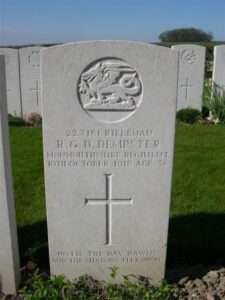
Thomas Jones, Second Lieutenant, Royal Field Artillery. Thomas was the only son of Walter and Lilly Jones, of Hayston Hall, Johnston, Haverfordwest. He was commissioned into the Royal Field Artillery, and was posted to their “D” Battery, 161st Brigade. The Battery was stationed at Ypres just prior to the Battle of Passchendaele, and took part in the opening bombardment on the first day of the battle, when Thomas was killed in action on 31 July 1917. Thomas was just 20 years old, and is buried at Coxyde Military Cemetery, Belgium. Thomas is also commemorated on an individual plaque within St. Mary’s Church.
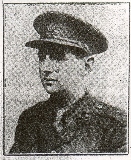
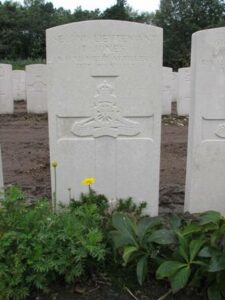
William Jupp, Private, 34194, Loyal North Lancashire Regiment. William was born at East Plumstead in Surrey, and resided at Clarbeston Road prior to the War. William had enlisted at Berkeley in Gloucester into the Gloucestershire Regiment, but later transferred into the 1st Battalion, Loyal North Lancashire Regiment, which was attached to 2 Brigade, 1st Division. The Division had been one of the first to arrive in France, fighting at the Battle of Mons, and taking part in the retreat to the Marne, where the Germans were stopped. They then fought at the Aisne, and at Chivy, before being moved North to Ypres. Here they fought at the First Battle of Ypres, where they again stopped the German Offensive, before wintering in Flanders. The following year saw them in action again at the Battle of Aubers, before moving South to Loos, where they fought during the Battle of Loos, and the action at the Hohenzollern redoubt. Again they were required for a major offensive, moving South to the Somme, where they fought during the opening of the Somme Offensive at the Battle of Albert, then at Bazentin, Pozieres, Flers-Courcelette and Morval. They were still on the Somme throughout the Winter of 1917 when William was killed in action on 7 March 1917. William is buried at Assevillers New British Cemetery, France.
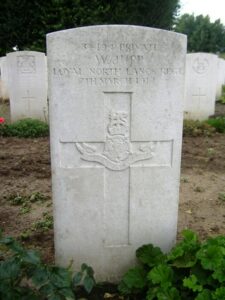
William Lewis Vaughan, Private, 11992, Welsh Regiment. William was the son of Edwin and Elizabeth Vaughan, of New House, Clarbeston Road. He was an army reservist, who had fought in the Boer War. William re-enlisted at Pontypridd into the 2nd Battalion, Welsh Regiment, which was attached to 3 Brigade, 1st Division. The Division had been one of the first to arrive in France, fighting at the Battle of Mons, and taking part in the retreat to the Marne, where the Germans were stopped. They then fought at the Aisne, and at Chivy, before being moved North to Ypres. Here they fought at the First Battle of Ypres, where they again stopped the German Offensive, before wintering in Flanders. The following year saw them in action again at the Battle of Aubers, and this is where William was killed, on the first day of the Battle on 9 May 1915. He was 37 years old, and is commemorated on the Le Touret Memorial, Richebourg L’Avoue, France.
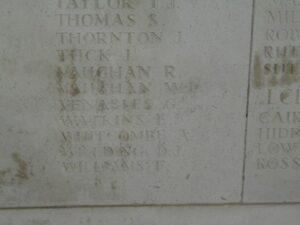
World War Two, 1939-1945
Iorwerth Jones, Private, 3969349, Durham Light Infantry. Iorwerth was born at Clydach Vale in 1913, the son of John Jones and Martha Ann Jones (nee Griffiths). His parents were from Pembrokeshire, but had moved to Merthyr Vale for work in the years leading up to the Great War. Prior to the war he resided at 26b, North Crescent, Haverfordwest. He served with the 16th Battalion, Durham Light Infantry. The battalion formed in Edinburgh in July 1940, and sailed from Liverpool on Christmas Day 1942 aboard the MV Staffordshire, as part of 139 Brigade, 46th Infantry Division, for Tunisia. After the fall of the Axis troops in North Africa, the battalion took part in the Salerno Landings of September 1943, and the subsequent campaign in Italy. Iorwerth was killed in Italy on 13 September 1944, aged 31. He is buried in Coriano Ridge War Cemetery, Italy. A brother, William David Jones, had been killed in Palestine in 1939.
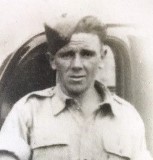
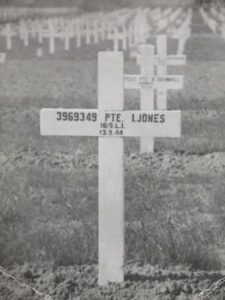
William David Jones, Corporal, 3956533, Welch Regiment. William was born at Clydach Vale in 1909, the son of John Jones and Martha Ann Jones (nee Griffiths). His parents were from Pembrokeshire, but had moved to Merthyr Vale for work in the years leading up to the Great War. William married Marjorie Violet Croucher at Gosport, Hampshire in 1932 and the couple had four children born over the coming years. He was a regular soldier, having enlisted at sometime prior to the war, and served with the 1st Battalion, Welch Regiment. In April 1939 the battalion left Southampton for Palestine aboard the troopship Somersetshire, together with the 1st Argyll & Sutherland Highlanders, and at Gibraltar picked up the 1st Welsh Guards. The three battalions then disembarked in Palestine for peacekeeping duties, following the Arab Revolt of 1936, as part of the 6th Division. On the day after they disembarked, the 1st Welch became involved in several skirmishes against Arabs near Safad, before seizing the village of Safsaf, near the northern border. William survived several of these skirmishes against the Arabs over the coming months, but sadly drowned at Nathanya on 22 October 1939, in unknown circumstances. The 30-year-old was buried in Ramleh War Cemetery, Israel. One of his brothers, Iorwerth, was killed in Italy in 1943, whilst his widow, Marjorie, lost a brother, George Robert Frederick Croucher, who was killed with the loss of HMS Panther in 1943.
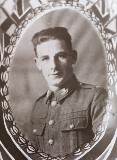
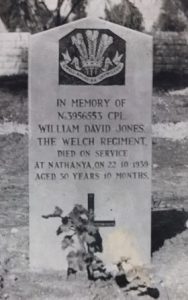
Lloyd George Morris, Flight Sergeant, 628708, Royal Air Force. Lloyd was born in 1914, the son of Dan and Sarah Ann Morris, of Scolock East, Clarbeston Road. He joined the Royal Air Force, and trained as a Wireless Operator, before being posted to RAF Pocklington, in Yorkshire. Lloyd married Elsie Irene Aylett at Pocklington in 1941. On 10 April 1941, Lloyd took off from England aboard an Armstrong Whitworth Whitley, Serial T4165, which was on a secret mission to drop a team of Polish saboteurs in occupied Europe. The aircraft developed problems whilst flying over France, and turned back. It crashed at Tangmere early in the morning of 11 April 1941, killing Lloyd and two other crewmen. He was 28 years old, and is buried in Middleton-on-the-Wolds Church Cemetery. He is also commemorated on his parents grave at Wolfscastle.
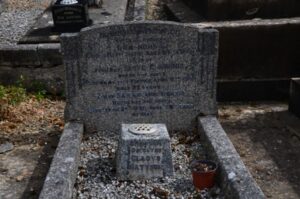
David Maurice Rees, Able Seaman, P/JX. 219796, Royal Navy. David was the son of Daniel and Ann Rees of Wiston. He served with the Royal Navy at HMS Victory, the shore establishment at Portsmouth. David died at Portsmouth on 10 January 1946, aged 31. He was brought home to be buried at Wiston Calvanistic Methodist Burial Ground. David does not appear to be commemorated locally.
